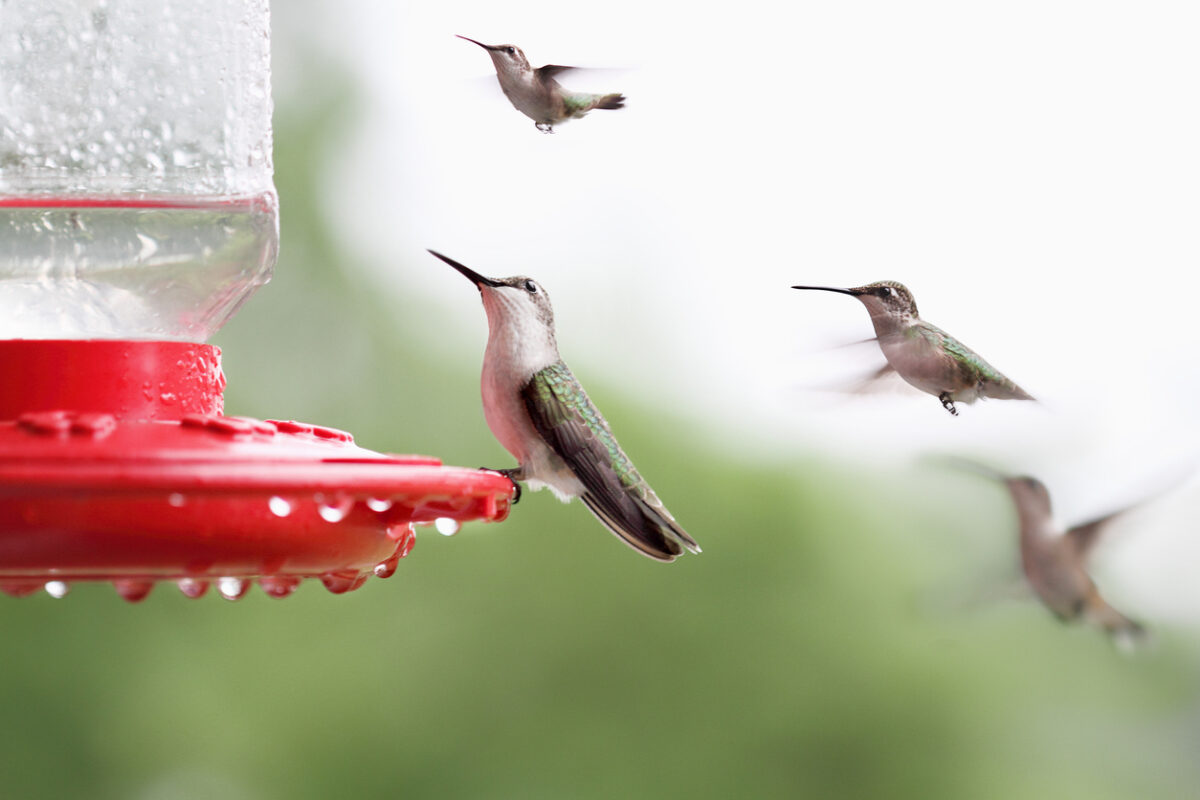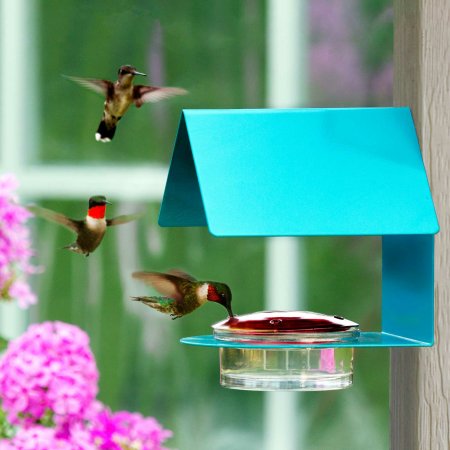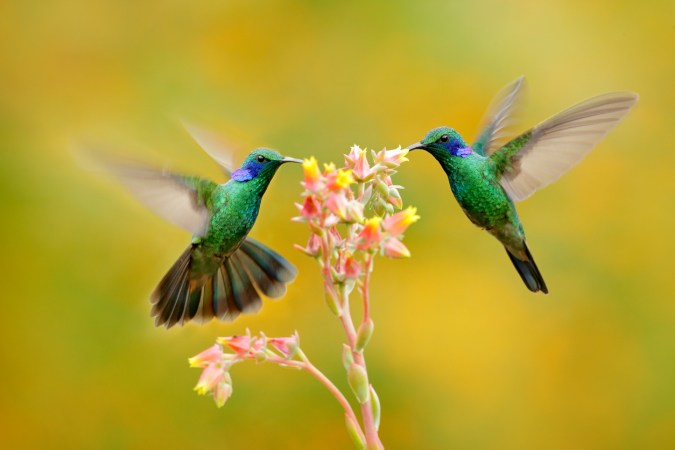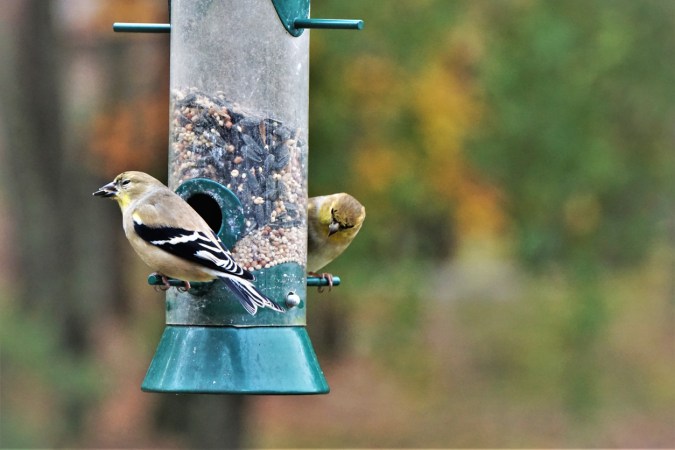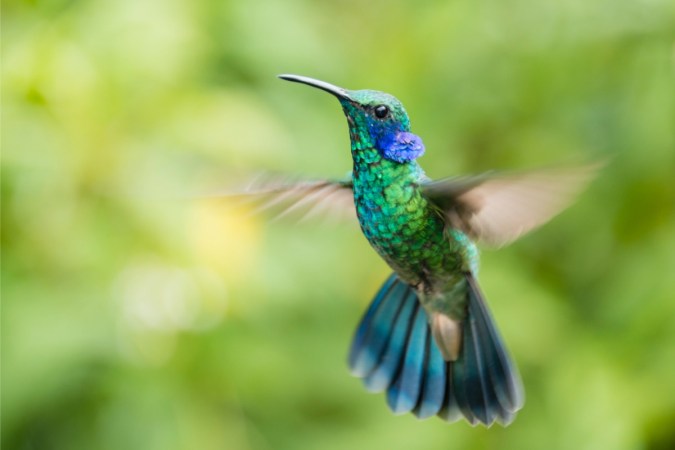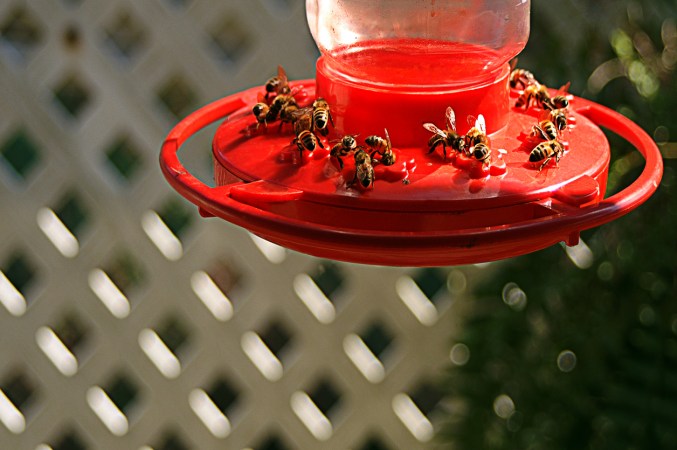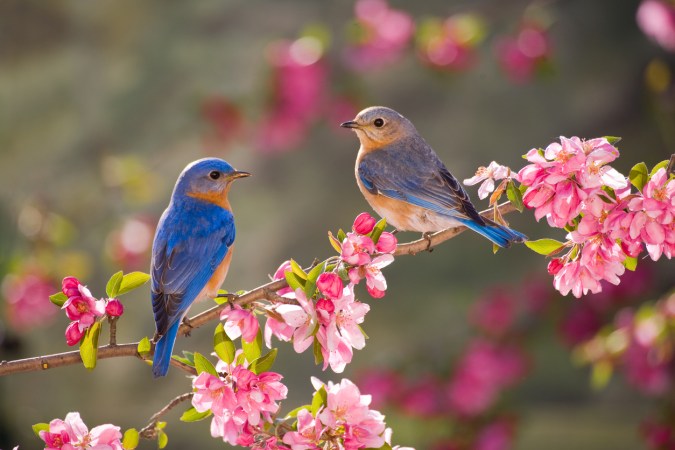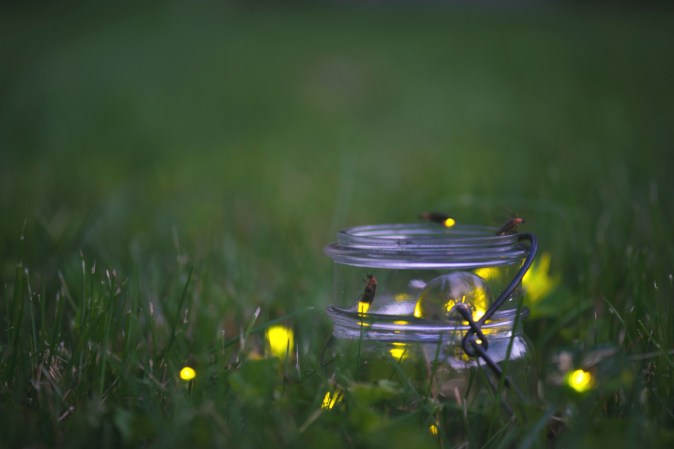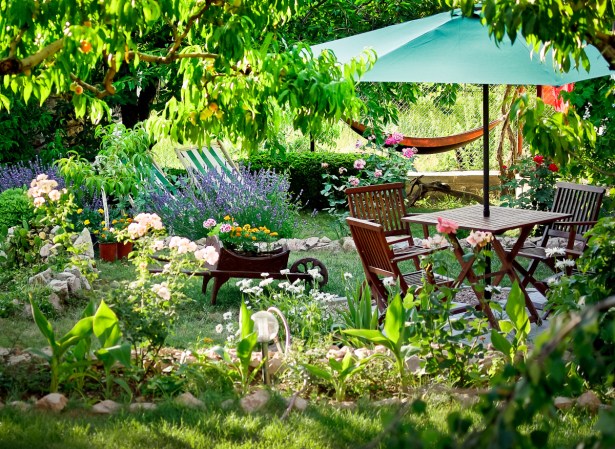We may earn revenue from the products available on this page and participate in affiliate programs. Learn More ›
Finding the right ways to attract hummingbirds to your yard can provide you with hours of joyful entertainment, as they’re one of the most fascinating birds to watch. These brightly colored, iridescent creatures have tiny bodies and are incredibly agile. They can fly at speeds greater than 30 miles per hour, with some males even reaching 60 miles per hour. Hummingbirds flap their wings 10 to 80 times per second and can even fly backwards, something no other bird species can do. Hummingbirds also love flowers—sometimes drinking nectar from hundreds of flowers each day.
With more than 300 hummingbird species in the world, you are bound to attract some to your yard with the right tricks. Just be sure to avoid the following common mistakes.
RELATED: 12 Heroic Facts About Hummingbirds That’ll Make You Want to See More in Your Backyard
1. Planting the Wrong Types of Flowers
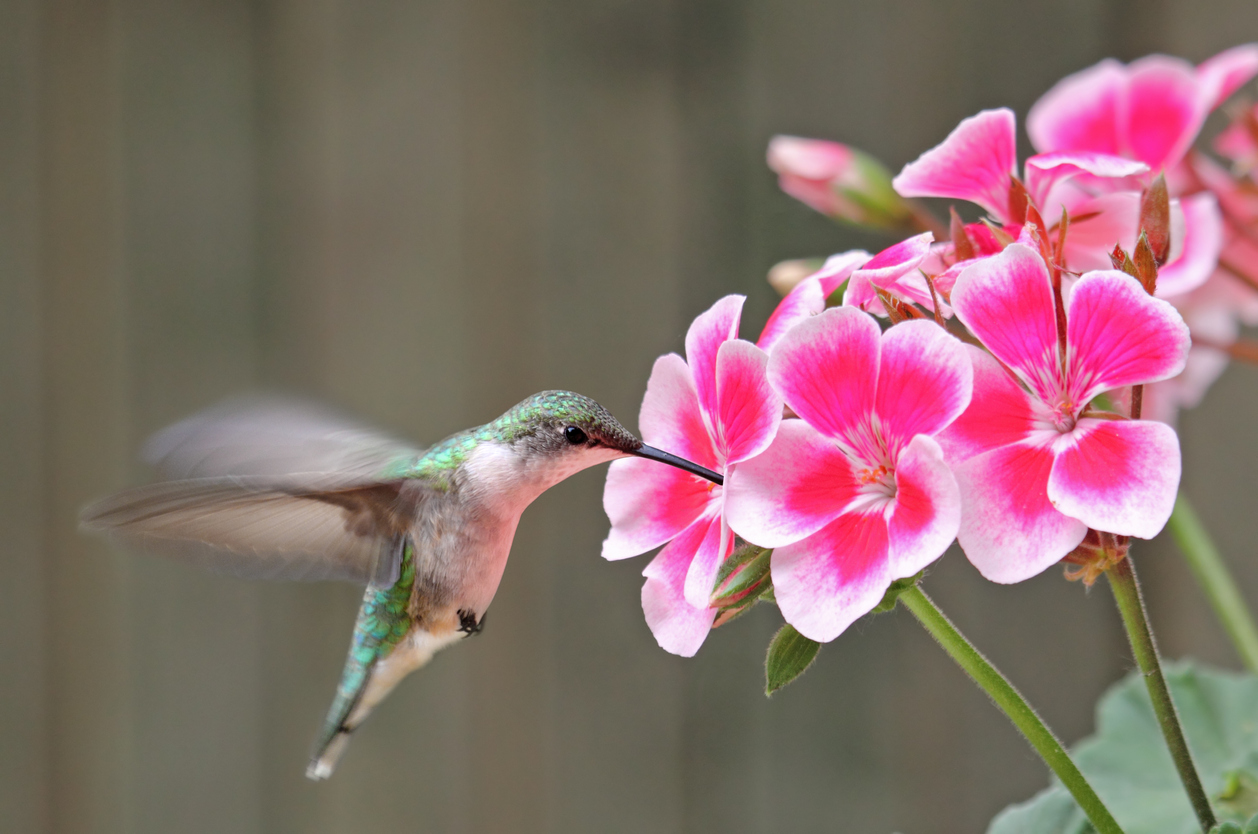
Hummingbirds are attracted to tubular-shaped, brightly colored red, orange, and yellow flowers that have high concentrations of sugar in their nectar. Without these types of plants in your yard, you might have a difficult time attracting hummingbirds. Be sure to plant some of their favorite flowers, like annual geranium, trumpet vine, petunia, penstemon, and zinnia.
2. Not Cleaning Feeders Regularly
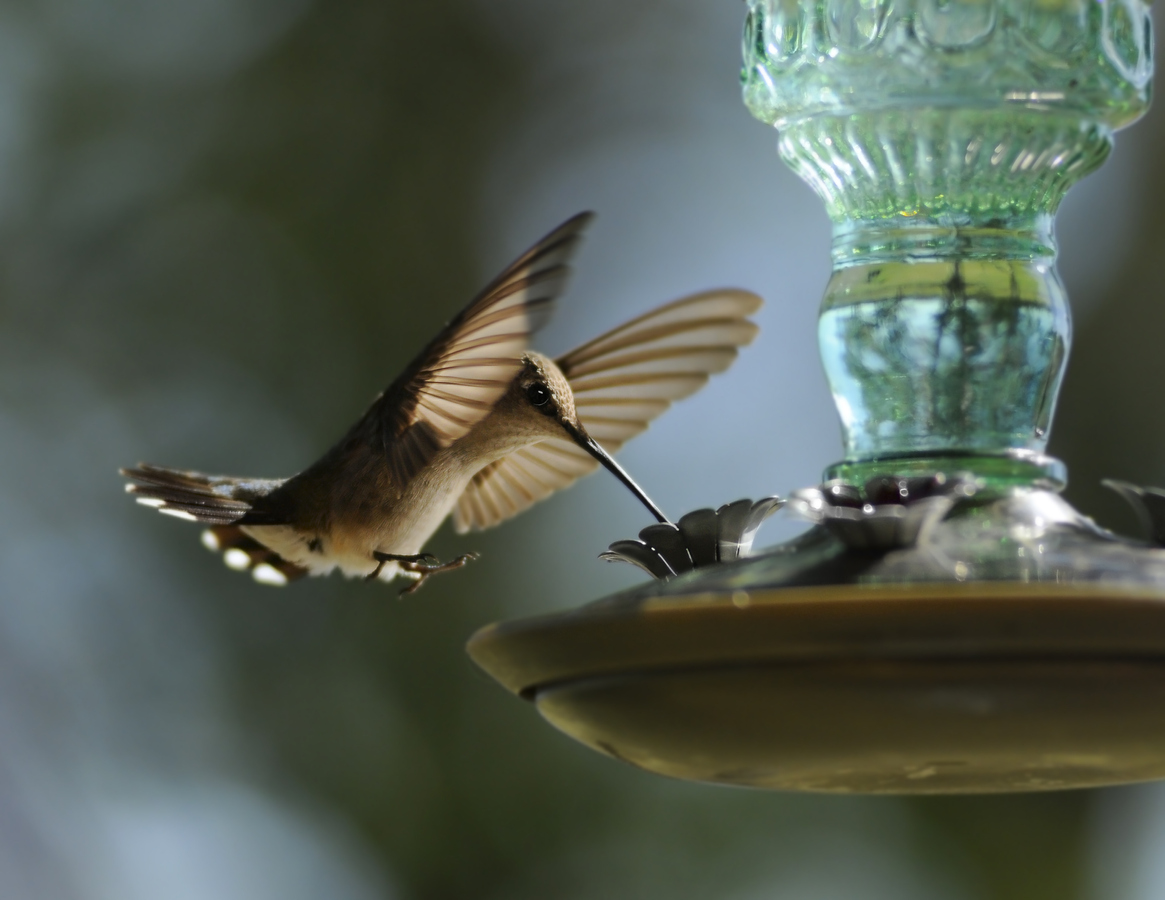
Hummingbirds are more likely to return to regularly cleaned hummingbird feeders, and keeping them clean also helps the birds stay healthy. It’s recommended to clean feeders once a week at minimum, and many experts suggest daily cleanings. Nectar ferments, which can lead to mold and bacteria growth. This can spoil the birds’ treat and make them sick, so keeping their nectar fresh and feeders clean is imperative.
Many hummingbird feeders are dishwasher-safe. For those that aren’t, you can clean them with soapy water and a bottlebrush, old toothbrush, or pipe cleaner. Rinse everything completely and let all parts dry before reassembling your feeder. Another option is to use vinegar to clean your feeders.
3. Hanging Feeders in the Wrong Places
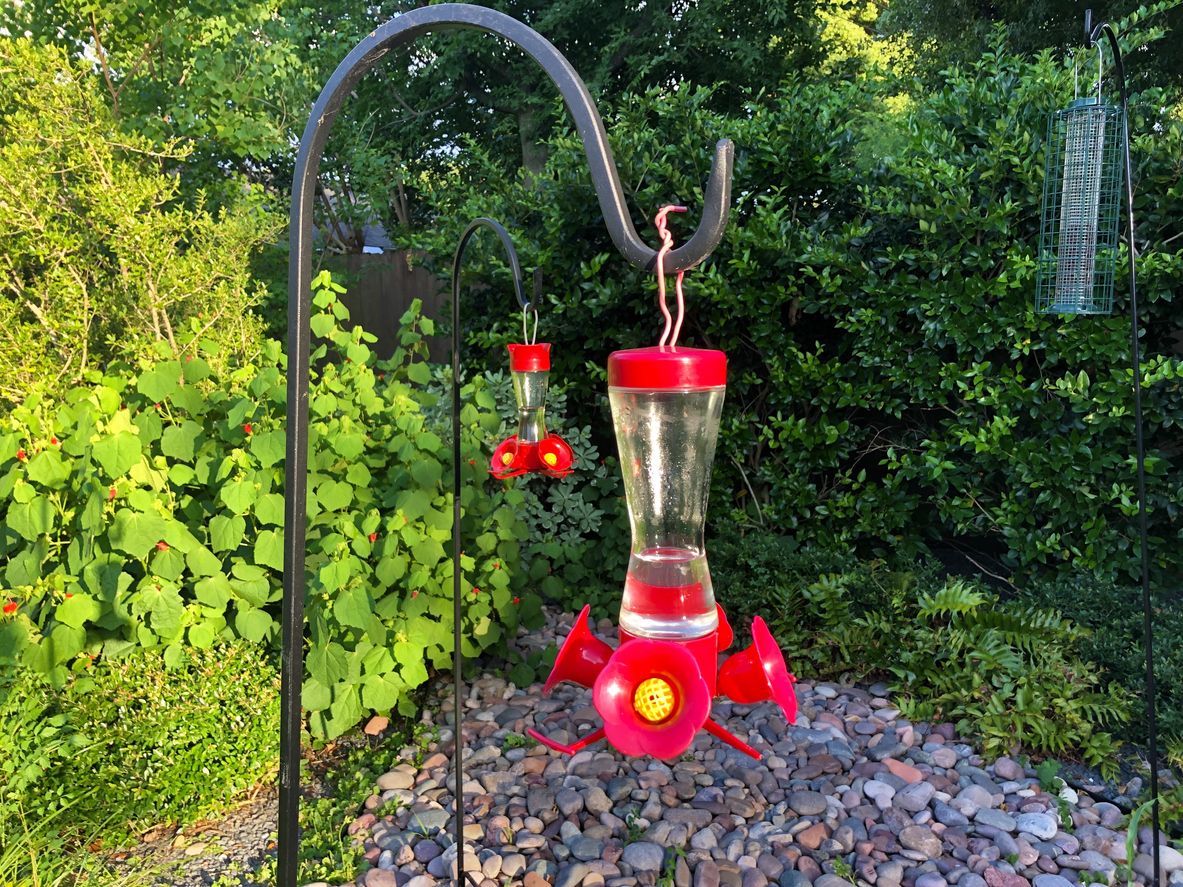
Another reason hummingbirds may not be showing up in your yard is that you’ve hung their feeders in the wrong place. Consider these helpful tips on where to hang bird feeders: Keep feeders clear of windows, choose a quiet spot with little activity, make sure feeders are visible to passing birds, and protect feeders from spilling in strong winds and storms by positioning them in sheltered areas.
4. Using the Wrong Hummingbird Nectar
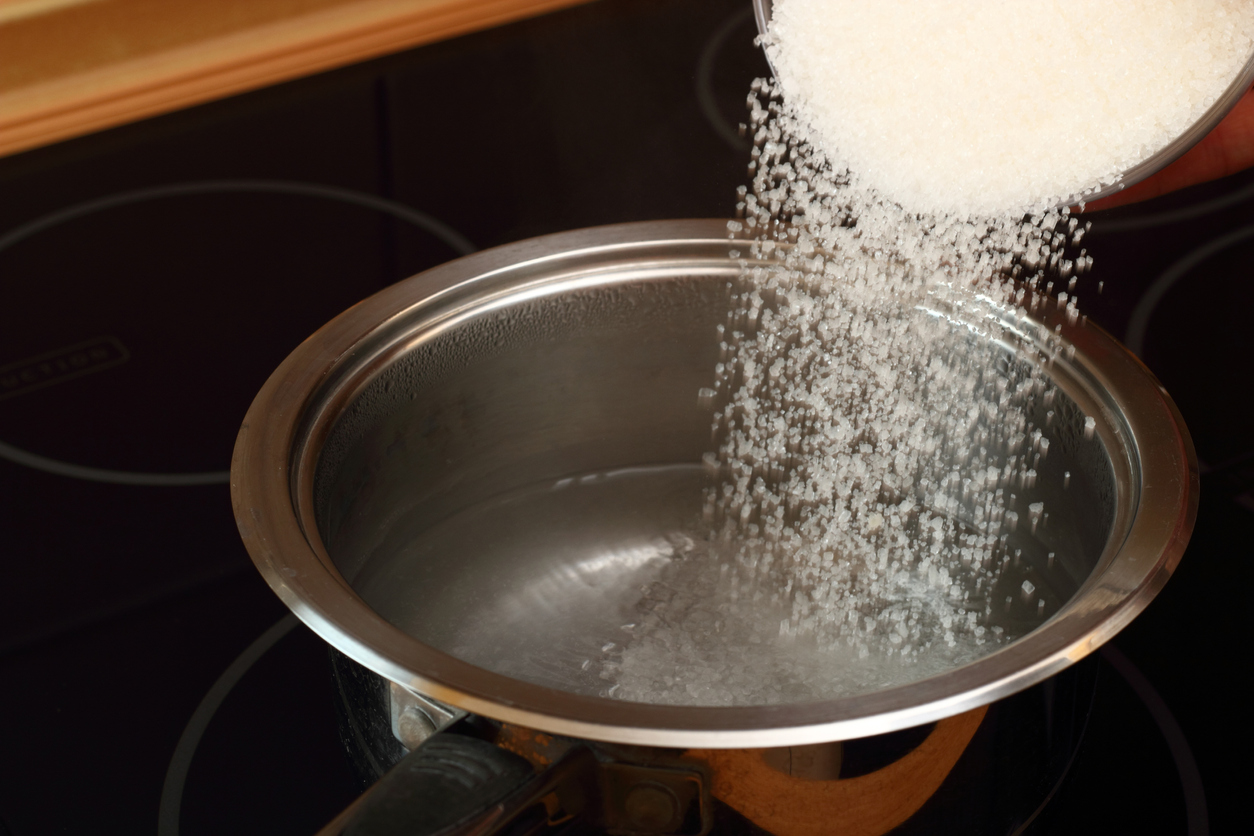
Without the right type of nectar, you will have trouble attracting hummingbirds to your yard. Be sure you are using the right mixture—not too weak and not too strong. Avoid sweeteners other than plain sugar, including sugar substitutes, which can make the nectar taste unpleasant to hummingbirds and even be unhealthy for them. You can save money and provide fresh nectar without any preservatives by making your own with this hummingbird food recipe.
5. Not Changing Nectar Frequently Enough
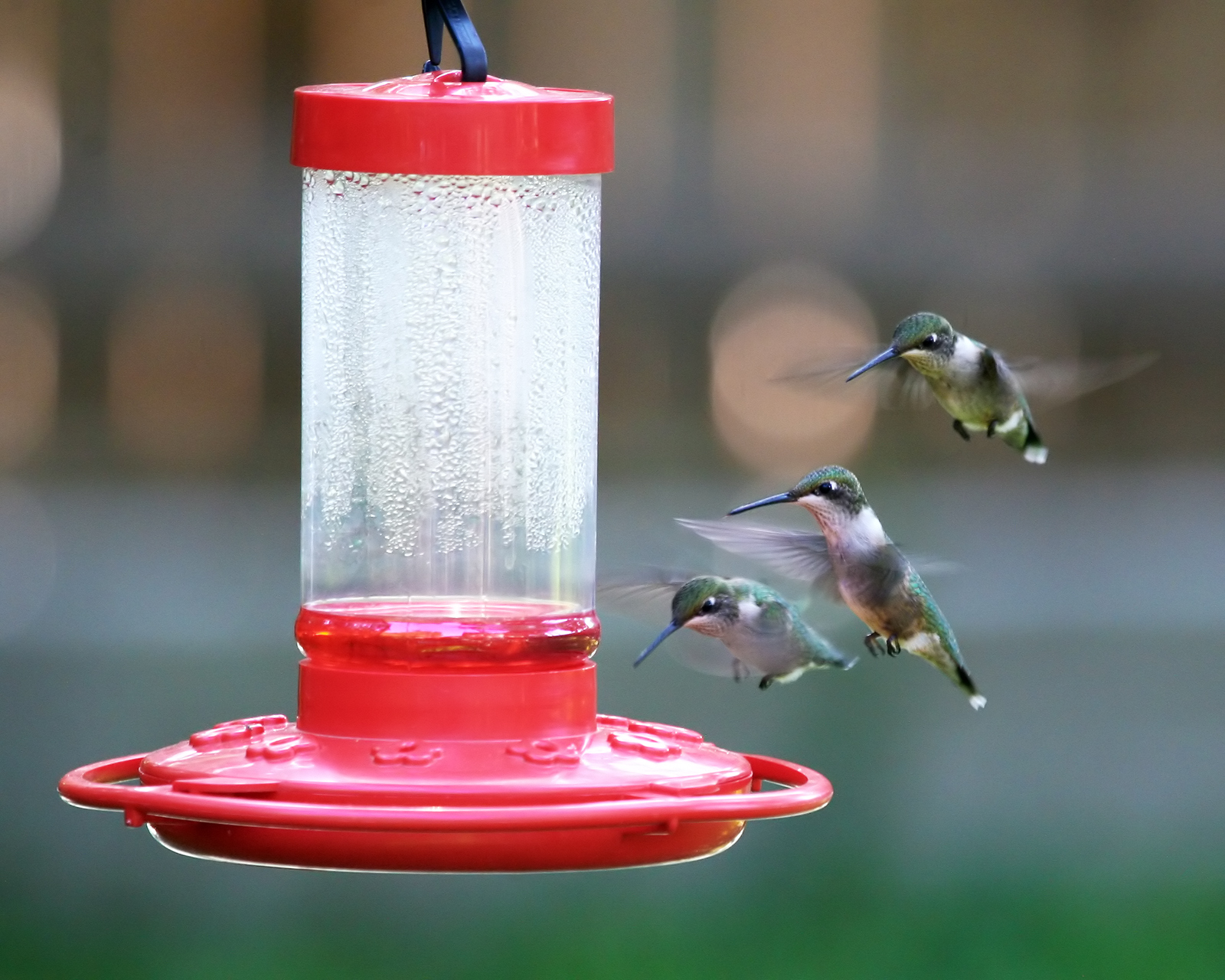
Nectar can spoil quickly, especially in hot weather. Spoiled nectar can make hummingbirds sick. At a minimum, replace the nectar in your hummingbird feeders twice a week during cool weather and every other day (or even daily) when temperatures are 80 degrees Fahrenheit or higher. Also, avoid placing feeders in direct sunlight, since the sun and heat can spoil the nectar more quickly. However, avoid deep shade as well because that will make the feeder hard to find.
RELATED: The Best Hummingbird Feeders
6. Using Red Dye in Hummingbird Nectar
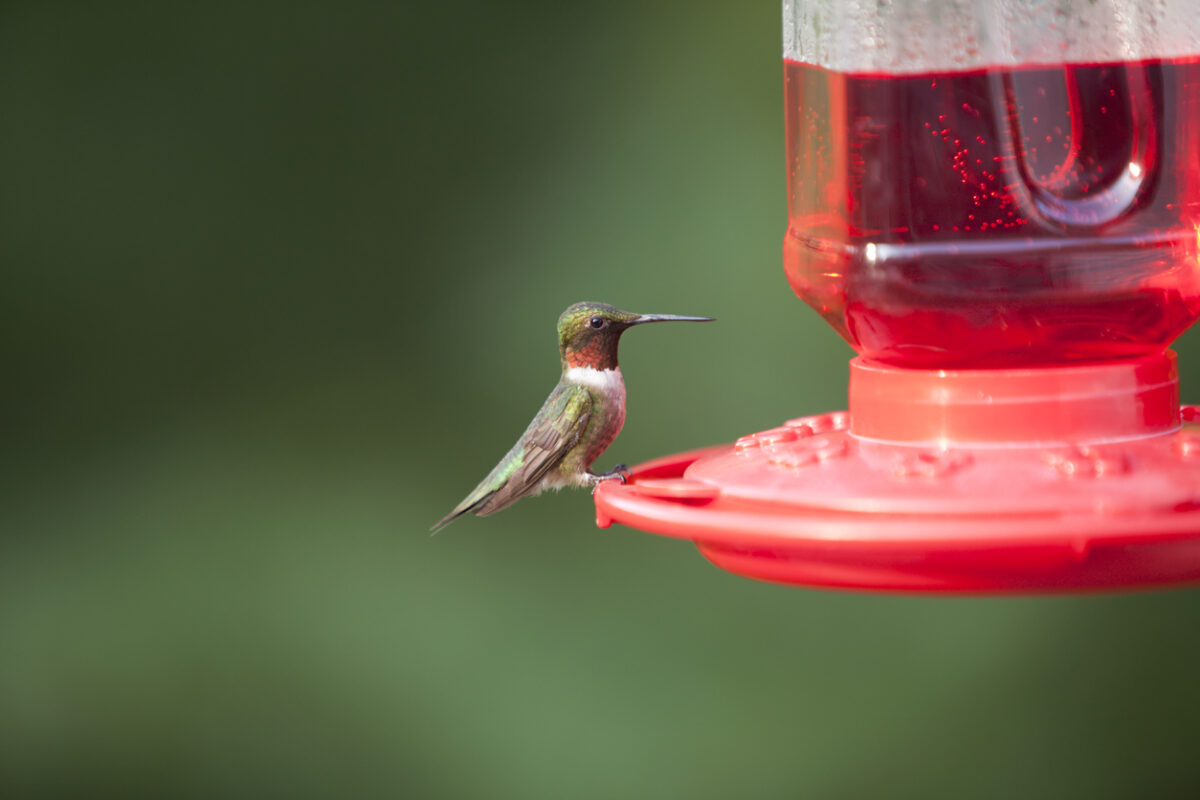
While it is well known that hummingbirds are attracted to the color red and most hummingbird feeders are red, you should never add red dye to nectar to attract hummingbirds. Red dye can potentially harm these creatures, especially given their tiny bodies and extraordinarily high metabolism. It’s better to choose red hummingbird feeders and hang them near hummingbirds’ favorite flowers, which are often bright shades of red, orange, and yellow.
7. Not Keeping Bees and Wasps Away
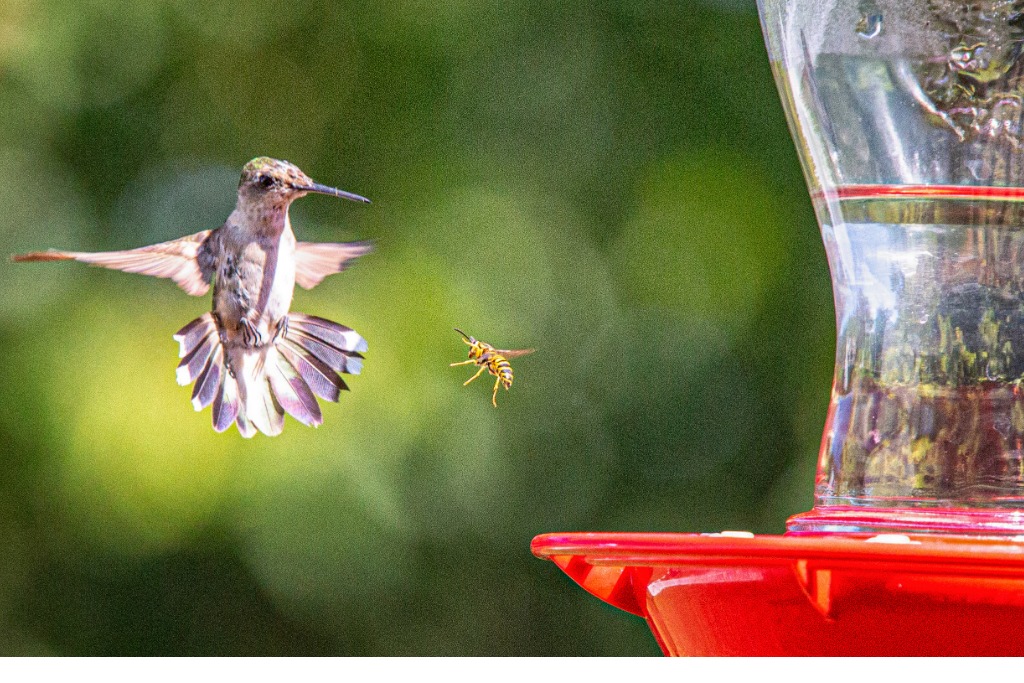
Bees and wasps love nectar as much as hummingbirds, but if too many are hanging out by hummingbird feeders, the birds will keep their distance. A swarm of bees can overcrowd the feeder, and worse, they can contaminate the nectar. Wasps are also known to become aggressive and will chase off the birds.
To keep wasps and bees away from hummingbird feeders, look for feeders that are less insect-friendly, such as saucer-style feeders that are accessible to long hummingbird beaks but harder for insects to infiltrate. Other options include installing bee guards like this option available at The Home Depot on your hummingbird feeder and buying red feeders to attract hummingbirds (bees and wasps prefer yellow).
8. Allowing Ants to Get into the Feeder
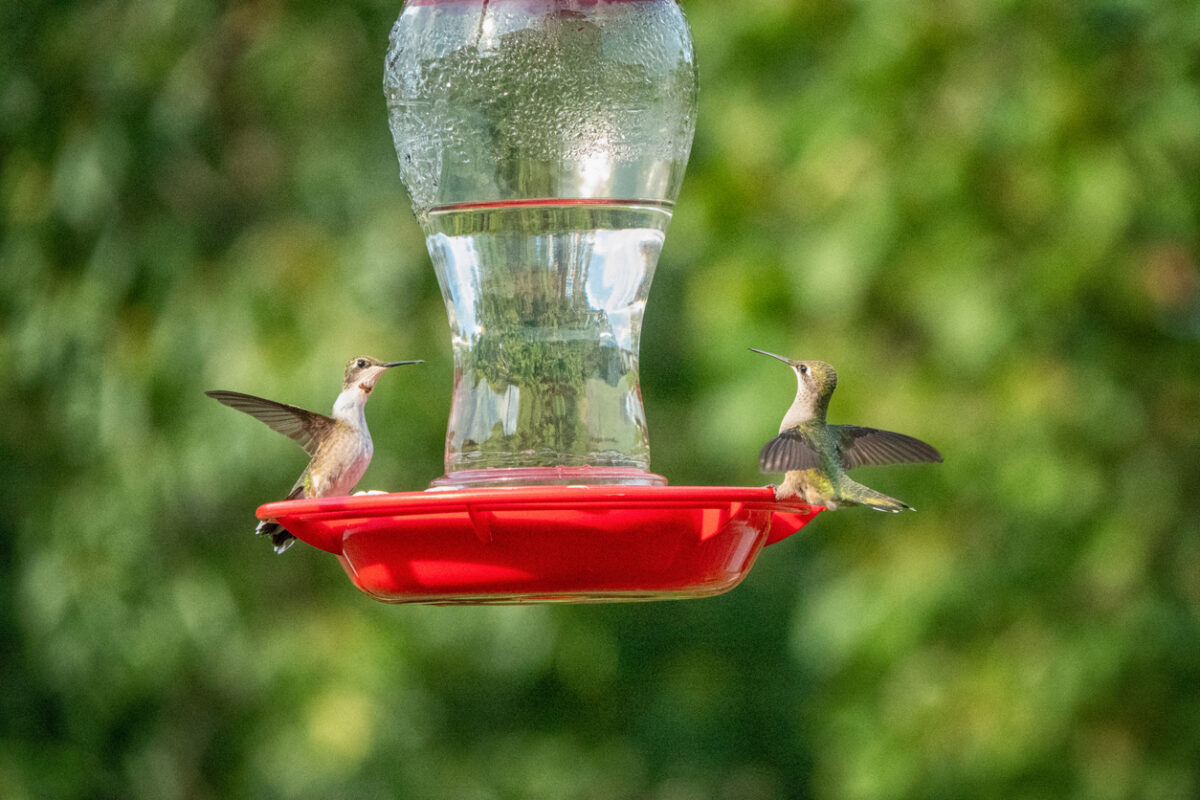
Ants also love nectar, but if they get into your hummingbird feeders, they can become trapped and contaminate the nectar. Unsurprisingly, hummingbirds are not interested in ant-filled nectar. In addition to avoiding spills when filling or hanging feeders, there are other ways to keep ants out of hummingbird feeders.
First, check the feeder often for cracks or leaks; if you spot any, patch them as soon as possible. Next, choose a feeder with an ant guard (also called an ant moat), or install a separate piece like this one available at Lowe’s onto your feeder. This is a shallow trough filled with water that will trap ants before they make their way into a feeder.
9. Forgetting to Include a Water Feature
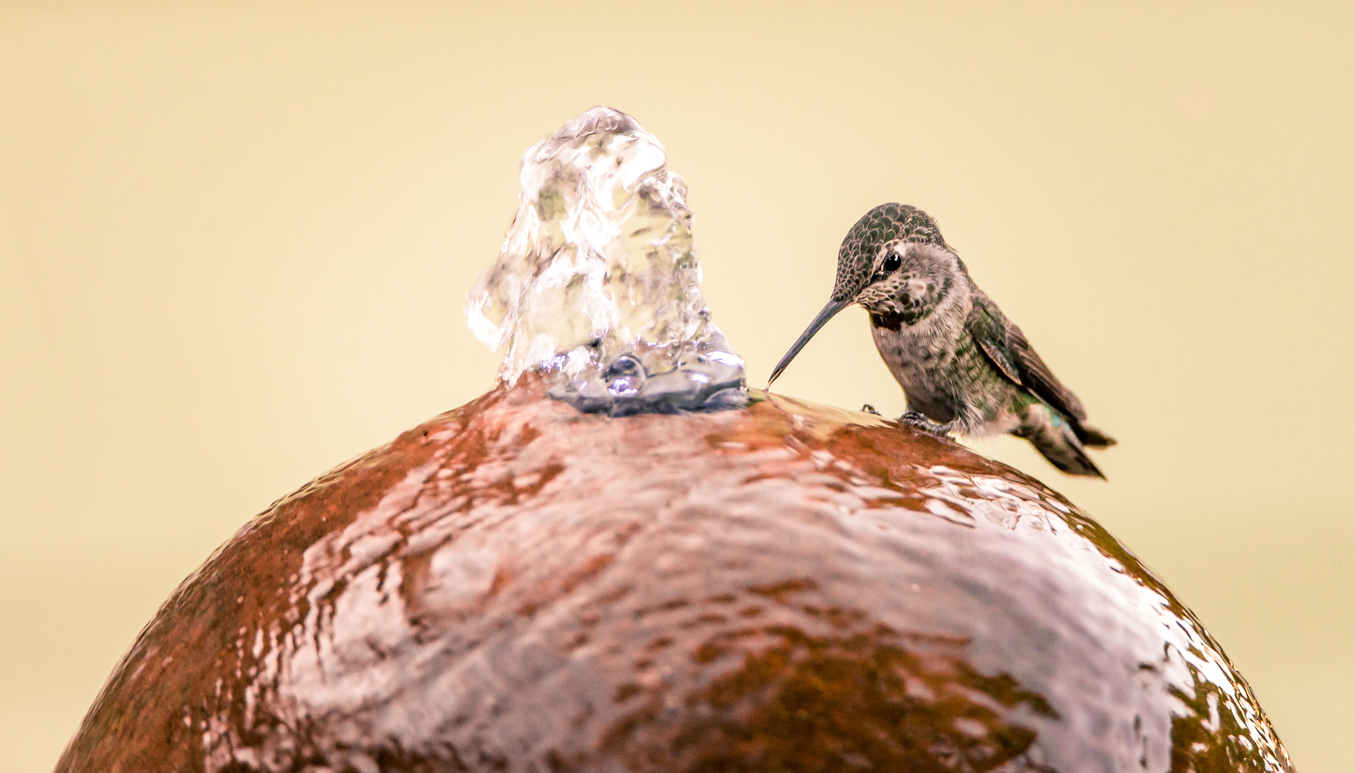
If hummingbirds are skipping your home, it might be because you do not have a water feature in your yard to attract them. Hummingbirds enjoy water for both drinking and bathing. Some hummingbirds might visit a regular dish-style bird bath, but many prefer shallow water or being able to fly through water. Try an outdoor fountain that sprays water upwards that the birds can fly through. The best water feature for hummingbirds is a mister with a fine spray of water that they can fly through easily. Mist over your bird bath or plants or hang it from a tree branch.
10. Only Offering One Hummingbird Feeder
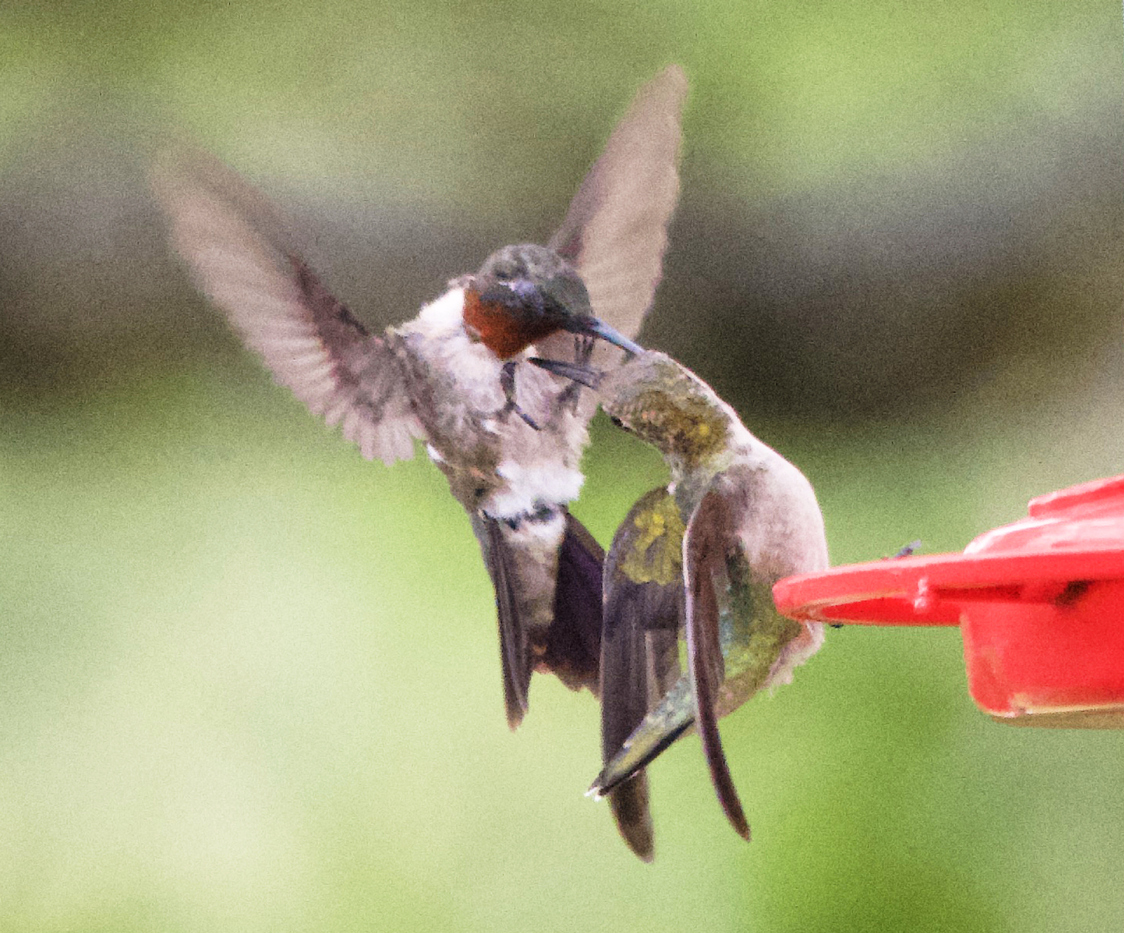
A simple mistake is to only have one hummingbird feeder in your yard. Often, one particular hummingbird will claim a feeder, preventing other birds from also enjoying the nectar. These birds can be territorial about food and aggressively chase away their competition. You can solve this problem by hanging multiple feeders at least 10 feet apart from each other and offering hummingbird-attracting flowers nearby.
RELATED: 6 Incredible Things to Know About Hummingbird Nests

